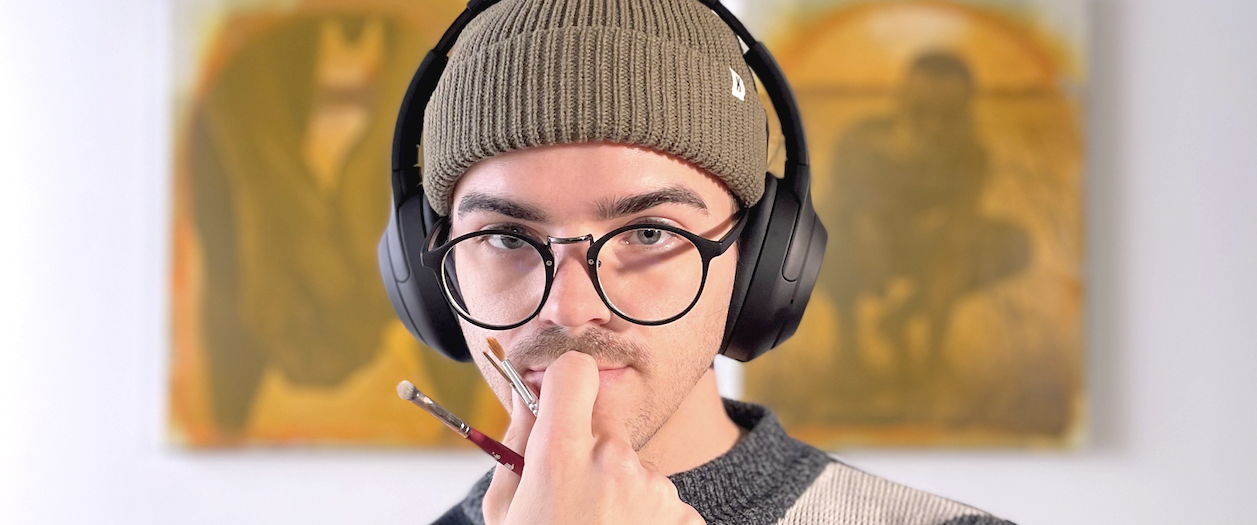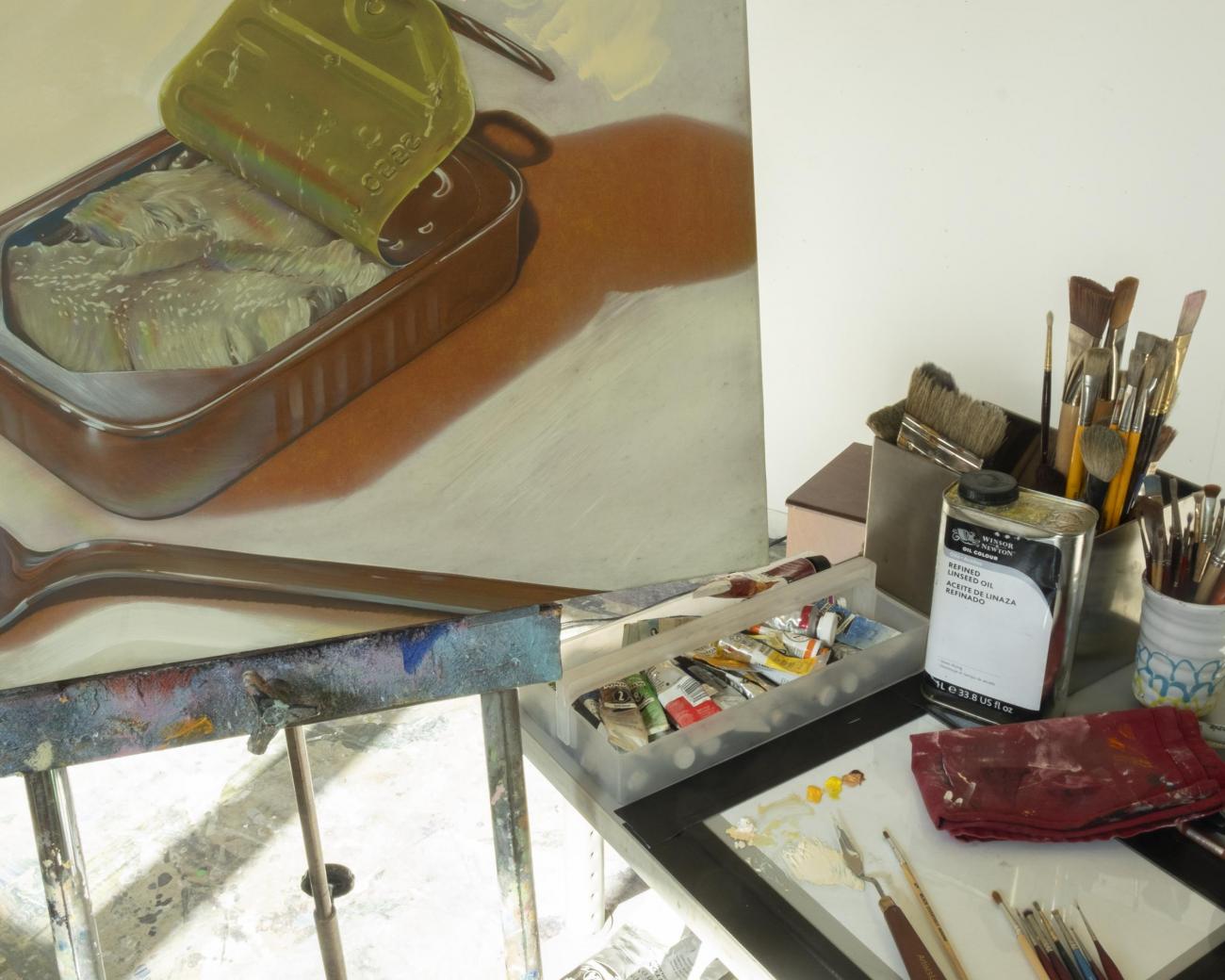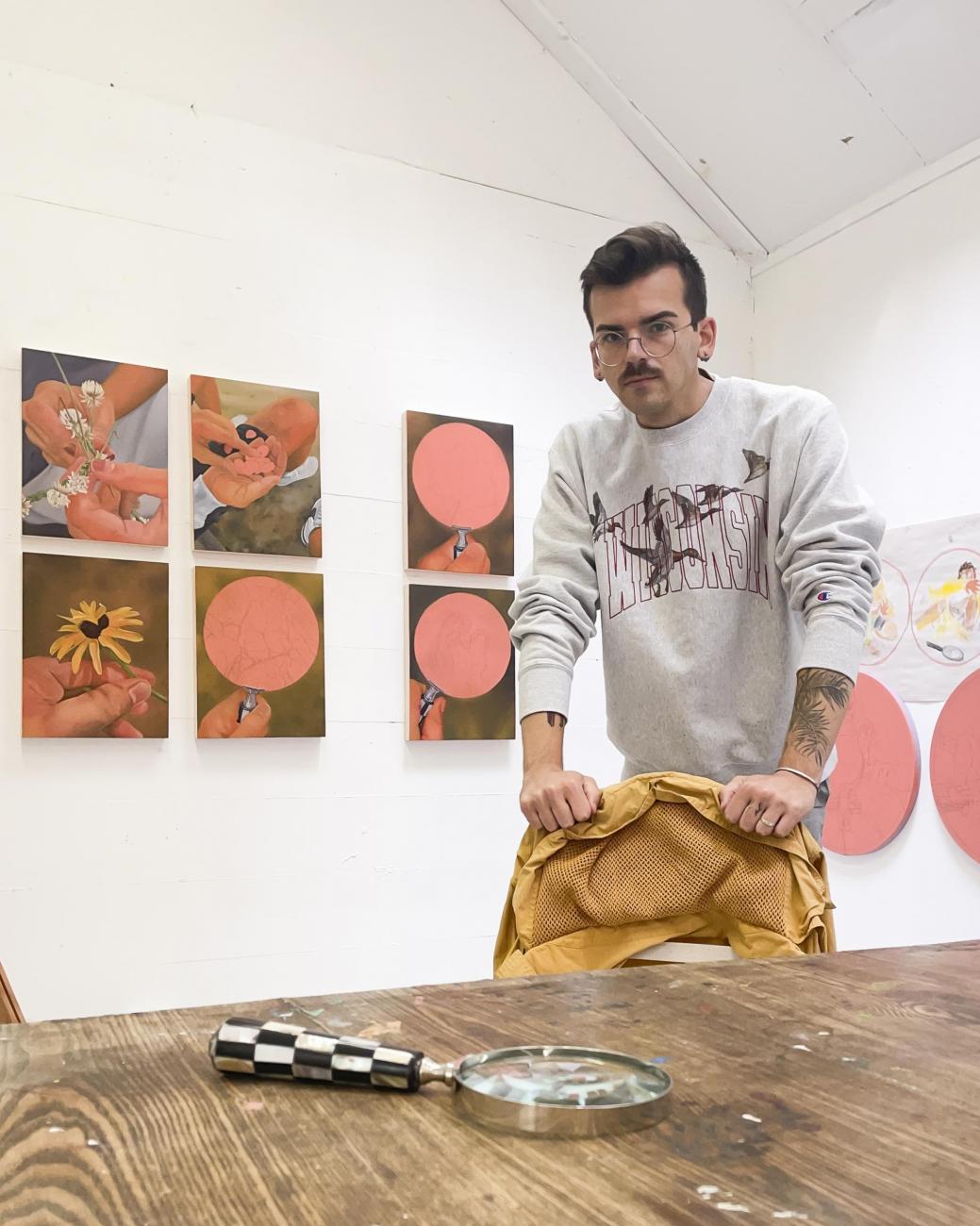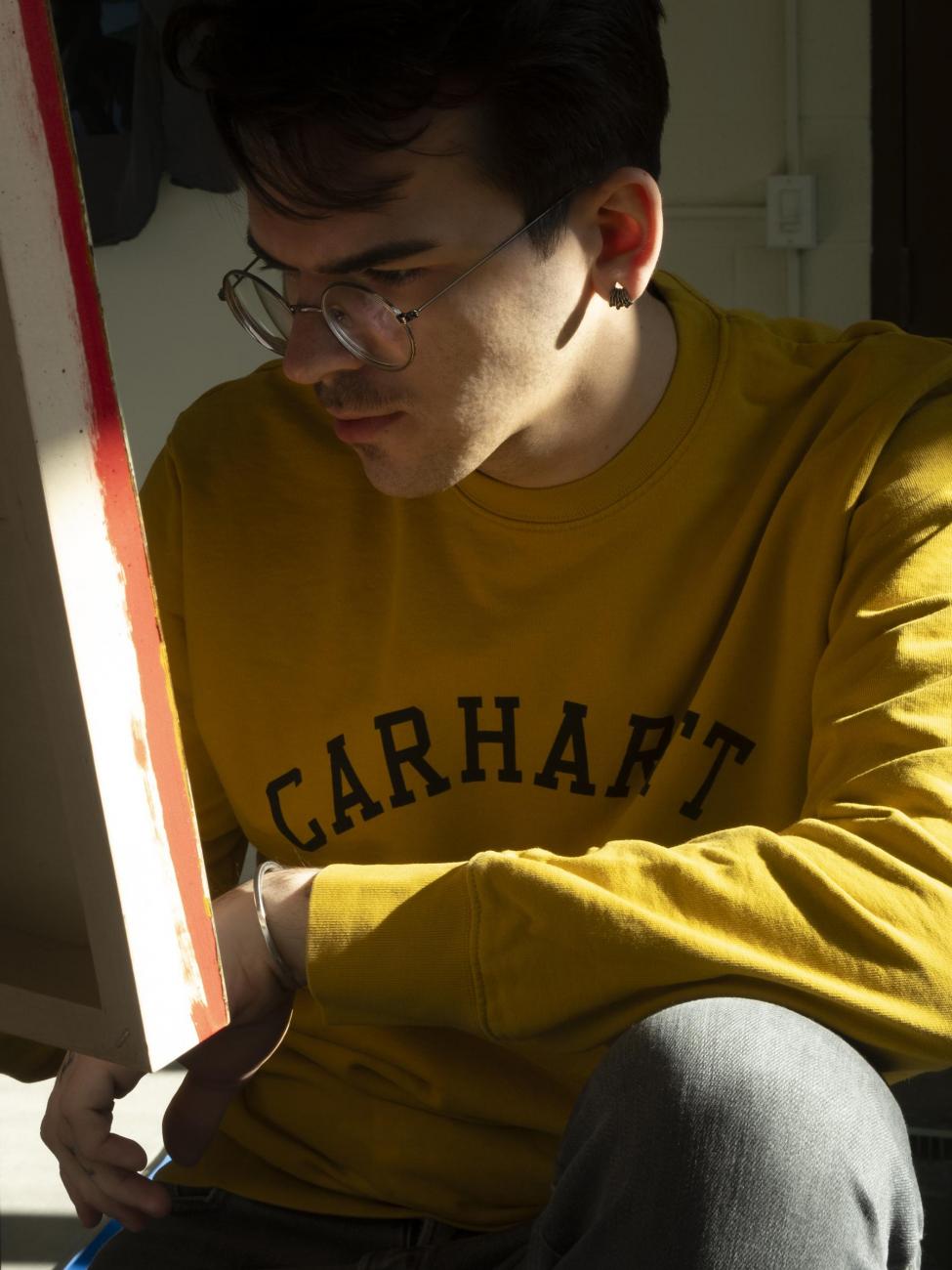Meet Robert Martin
We spoke to Robert Martin about how his rural upbringing, personal identity, and connection to nature shape his artistic vision and practice.
Through this conversation, he shares insights into the themes of resilience, community, and the intimate dialogue between humanity and nature that fuel his work.
How has your rural upbringing influenced your artistic perspective and the themes you explore in your work?
My rural upbringing has shaped my work in two main ways. These perspectives may seem oppositional, yet they create a balanced momentum that fuels my life and art. The first aspect is a culturally inherited view of nature, shaped by Americana icons like John James Audubon, Norman Rockwell, and Terry Redlin. Their works, though formative, reflect a limited and heteronormative worldview. Wildlife art resonates deeply in rural America, where people often associate fine art with natural landscapes and wildlife. My work draws on this visual language, yet moves beyond its narrow conventions. The second aspect stems from my own experiences in Wisconsin's Northwoods, where I grew up "free" to explore nature intimately. Early on, I noticed the queerness in nature, even before fully understanding human queerness. I observed how nature resists imposed norms, from multi-leaved clovers to matriarchal animal societies—an expansive reality that inspires my art today.
How have the landscapes and surroundings of rural America shaped your artistic identity? How do you convey a sense of place in your art?
Visiting my grandparents' home felt like stepping into a community library, where encyclopedias and bird paintings lined every corner. These early experiences taught me the power of symbols in shaping a regional identity. My work taps into these socially constructed associations with nature, reflecting the values of the rural Midwest. In creating my art, I pay close attention to atmospheric elements, like the honey-toned light over a lake at golden hour, which conveys the humid, nostalgic air of the Midwest. It’s not just about the scene itself but also the sensory experience of place.
How has your connection to your local community impacted your artistic journey?
There’s a common narrative that queer individuals must move to urban areas to live freely, but this perspective can be painful. I believe in the importance of staying connected to one's roots, even if it means returning with a critical yet constructive approach. My work aims to bridge the divide between rural communities and queer identity, fostering understanding. It’s a commitment to creating visibility and inclusion in spaces often seen as isolating for queer individuals. This drive has kept me closer to home, my family, and myself, grounding my work in authenticity.
Are there specific stories or aspects of rural life that you find yourself drawn to in your artwork?
Many of my compositions stem from memories of growing up in Wisconsin’s woods and waters. My sentimental connection to my childhood draws me to hyper-specific scenes, like the "frog-catcher" moments that inspired some of my early 2023 paintings. I’m influenced by writers like Robert Peters, who vividly captured his rural experiences. His work resonated with me, as his stories of exploring the woods and discovering identity mirrored my own. This personal history becomes tangible in my art, allowing viewers to connect to shared memories of place and childhood.
How has growing up in a rural setting influenced your resilience and creative problem-solving?
Growing up with both masculine and feminine traits, I was naturally curious about everything my siblings and I engaged in, from pinewood derby races to sewing Barbie dresses. This curiosity and rejection of gender norms fueled my resilience, helping me embrace my individuality even in isolating situations. While I recognize the challenges of this upbringing, I’m also grateful for the strong sense of self it fostered. Today, this independence allows me to work alone for long hours in my studio, fully immersed in my creative process.
What inspired the body of work you created for this show?
I’ve always been interested in the pressure placed on queer communities to prove or explain their existence. My work seeks to subvert these expectations by presenting hybrid images that blend natural elements prone to misrepresentation. Through digital sketches and oil on canvas, I create compositions that meld distinct elements, reflecting a fluid, non-linear identity. This approach aims to capture a genuine human experience that transcends simplified categories of identity.
What message do you hope to convey through the relationship between human and nature in your work?
The boundary between human and nature is an artificial one. Our relationship with nature has reached a point of imbalance due to unsustainable habits. My art doesn’t aim to correct this imbalance directly but to educate and provoke thought. By blending human and natural forms, I show how interconnected we truly are. Inspired by conversations with friends and family, my work seeks to spark discussions about our place within the natural world.
Can you talk about the techniques and materials you use in your work? How do these choices tell your story?
Research is key to my creative process. I study historical artworks and contemporary media to understand how nature has been visually represented over time. My pieces combine oil paints with pastel illustrations, creating scenes that balance realism and imagination. The warm, rich tones recall the feel of a vintage photograph, bringing a sense of memory and nostalgia. My attention to anatomical detail and realistic elements validates the hybrid figures in my work, giving them a presence that feels both genuine and dreamlike.
What has been the most challenging aspect of creating this series, and how have you overcome it?
The hardest part has been balancing the many ideas and techniques needed to create cohesive compositions. When a painting isn’t working, I tend to overwork it, creating a muddled image. I've learned to step back and give myself time to rethink the piece rather than force it. Taking breaks to walk around my neighborhood helps me reset, and ultimately, I’ve realized that giving my ideas space to develop makes for a stronger, more enjoyable process.



